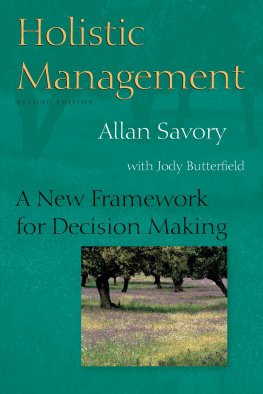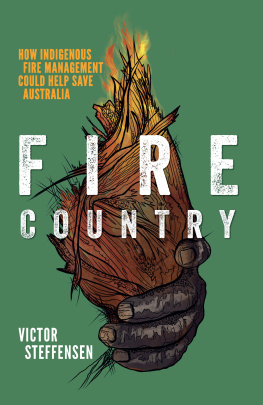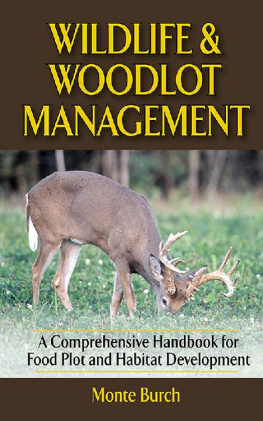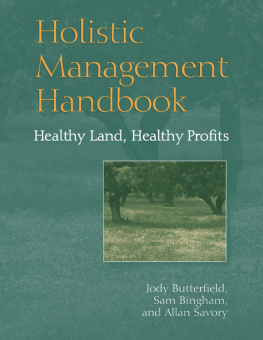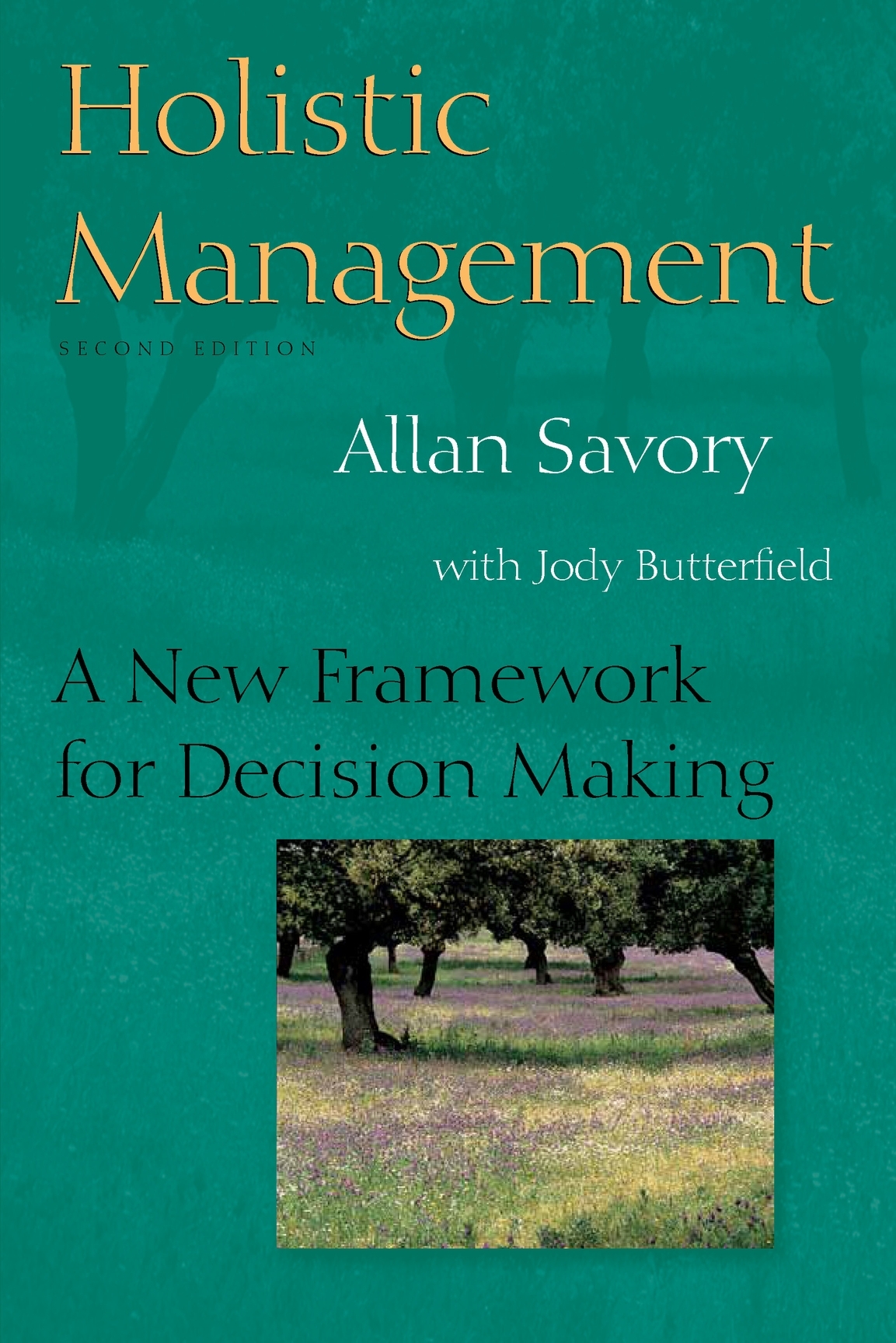Acknowledgments
A nything we do in science is built on the work of thousands who have gone before us. Both from their successes and from their failures we learn and thus advance. I am deeply indebted to the many who have struggled to find better ways for us to live in harmony with each other and our environment and on whose work I have built.
From the time I departed from the conventional thinking of my training, I have been supported and helped by many people, and I welcome this opportunity to thank them. I am particularly indebted to the many farmers and ranchers in southern Africa, and later in North America, who loved their land and were prepared to work with me in those early years in the search for answers. I am no less indebted to those working in government agencies at the time who supported our efforts, despite considerable criticism from their peers. Without the courage and enthusiasm of all these people we would never have succeeded in finding a better way.
Since forming the Center for Holistic Management in 1984, my wife, Jody Butterfield, and I have been joined by many others equally committed to developing the ideas further, most notably our growing network of Holistic Management Certified Educators. Many of the changes reflected in this edition of Holistic Management are a direct result of the contributions they have made, based on what they have learned through their own practice and in assisting others. We are all indebted to the village-based facilitators who have worked so hard to bring Holistic Management to the Hwange Communal Lands of Zimbabwe. They have shown the rest of us how we could simplify and clarify concepts that people everywhere have struggled to learn.
A number of friends and colleagues read portions of the manuscript, providing invaluable criticism and correcting embarrassing errors. They are Dr. Paul Martin, Department of Geosciences, University of Arizona; Dr. Cliff Montagne, Department of Plant, Soil, and Environmental Science, Montana State University; Dr. R.H. (Dick) Richardson, Department of Zoology, University of Texas at Austin; Dr. Brian Sindelar, a range management consultant in Bozeman, Montana; Dr. Deborah Stinner, Department of Entomology, Ohio State University; and Dr. Ray Travers, a registered professional forester in private practice in British Columbia. In addition, the following persons read the entire manuscript helping to improve the overall structure, challenging points that were weak or vague, and greatly reducing the number of incomprehensible passages: Alan Carpenter; Bill Casey; John Cleveland; Frank Dawley; Ghislaine Keyzer; Hunter Lovins; Walt Ruzzo; Arne Vanderburg; and Tom Walther. Marce Rackstraw made a valiant attempt to liven up the illustrations, and Stephen Verzi lent timely assistance in three-dimensional design. To all these people I give my most sincere thanks.
Finally, Jody and I are grateful most of all to the staff of the Center for Holistic Management, who for close to three years were forced to make do with two less people to share an enormous workload. That they did so without complaint only adds to the admiration we feel for them all.
A grant from the 777 Fund of The Tides Foundation helped to make this book possible. Many thanks.
References
In addition to the works cited within the text of this book, a number of other resources were utilized in preparing the manuscript, many of which are listed here for the reader who wishes to pursue the various subjects in greater depth. Additional background information is also provided on some of the topics raised.
CHAPTER 1. CHANGING THE WAY WE MAKE DECISIONS
In the last few decades advanced radiocarbon dating techniques have begun to show that the majority of the worlds large mammal species became extinct relatively recently and that their disappearance strongly coincides with the arrival of skilled human hunters. Though mammals had been the dominant animals in terrestrial environments for over 70 million years, the majority of the larger speciesthose weighing at least 100 pounds (44 kg)suddenly became extinct at the very end of the Pleistocene, from 10,000 to 35,000 years ago, depending on the continent.
All continents except Antarctica were affected, the Americas and Australia to a much greater degree than Africa and Asia. In North America 74 percent of the large mammal genera disappeared, possibly within a few centuries. In South America 79 percent of the genera disappeared in an equally short time, and in Australia 86 percent became extinct over a slightly longer period.
Geoscientist Paul Martin (University of Arizona) has developed a theory called the blitzkrieg hypothesis, the central tenet of which is that the extinctions occurred within a few hundred years of the first arrival of humans in any one place. He and other proponents of the theory suggest that the large mammals, as well as large flightless birds, were easy prey to early humans because they did not recognize humans as predators. To back his claims Martin points out that the extinctions occurred at greater intensity on continents of human invasion than on those of human origin. In Africa, where humans evolved for millions of years with large mammals, the extinctions had been minimal (19 percent), compared with the tremendous losses in the Americas, which were colonized by highly advanced hunting societies at the peak of their powers.
The idea that people wiped out the great animals within a few hundred years of arriving on the scene does pose a problem: there is no archaeological evidence, other than in New Zealandand even that was within the last 1,000 yearsthat humans systematically slaughtered the biggest animals. Maori butchering sites have been found where between 30,000 and 90,000 moa were killed. Analysis of these sites by modern-day archaeologists suggests that the wastage of meat was enormous. Entire moa legs have been found baked in ovens that were never opened. Whole bodies were frequently left to rot.
In Australia there is no sign of hunting at all, despite the fact that Aborigines were hunters. Indeed, not until the recent excavation of a site near Cuddie Springs was there unequivocal evidence that put people and the large mammals in the same place at the same time.
Some scientists still attribute the mass extinctions in Australia and the Americas to climatic changes, most notably the last ice age. However, in North America the large mammals persisted another 20,000 years after the ice had retreated to the poles; in Australia, almost all the large mammals appear to have vanished 15,000 years before the ice age reached its maximum. Even so, the last ice age was only one of seventeen that had occurred over a 2-million-year period, and none of the others had triggered such a rash of extinctions.
I am inclined to believe that our earlier ancestors of 10,000 or more years ago played a critical role in the late Pleistocene extinctionsboth through overkill and through the dramatic changes they produced through their burning. There is considerable evidence that a much greater proportion of the pre-human arrival vegetation was fire sensitive following millions of years of coevolution (of plants, soils, and large mammals). The burning of fire-sensitive vegetation on the scale early humans did alone probably would have produced enough of a change to cause major extinctions, even if over-hunting were not a factor. One simply cannot change a continent from largely fire-sensitive vegetation to fire-dependent vegetation (as the pollen record shows, for instance, in Australia) without causing massive disruption to animal populations. Any prey population stressed by environmental deterioration is more susceptible to predation, which human hunters would have exploited.

